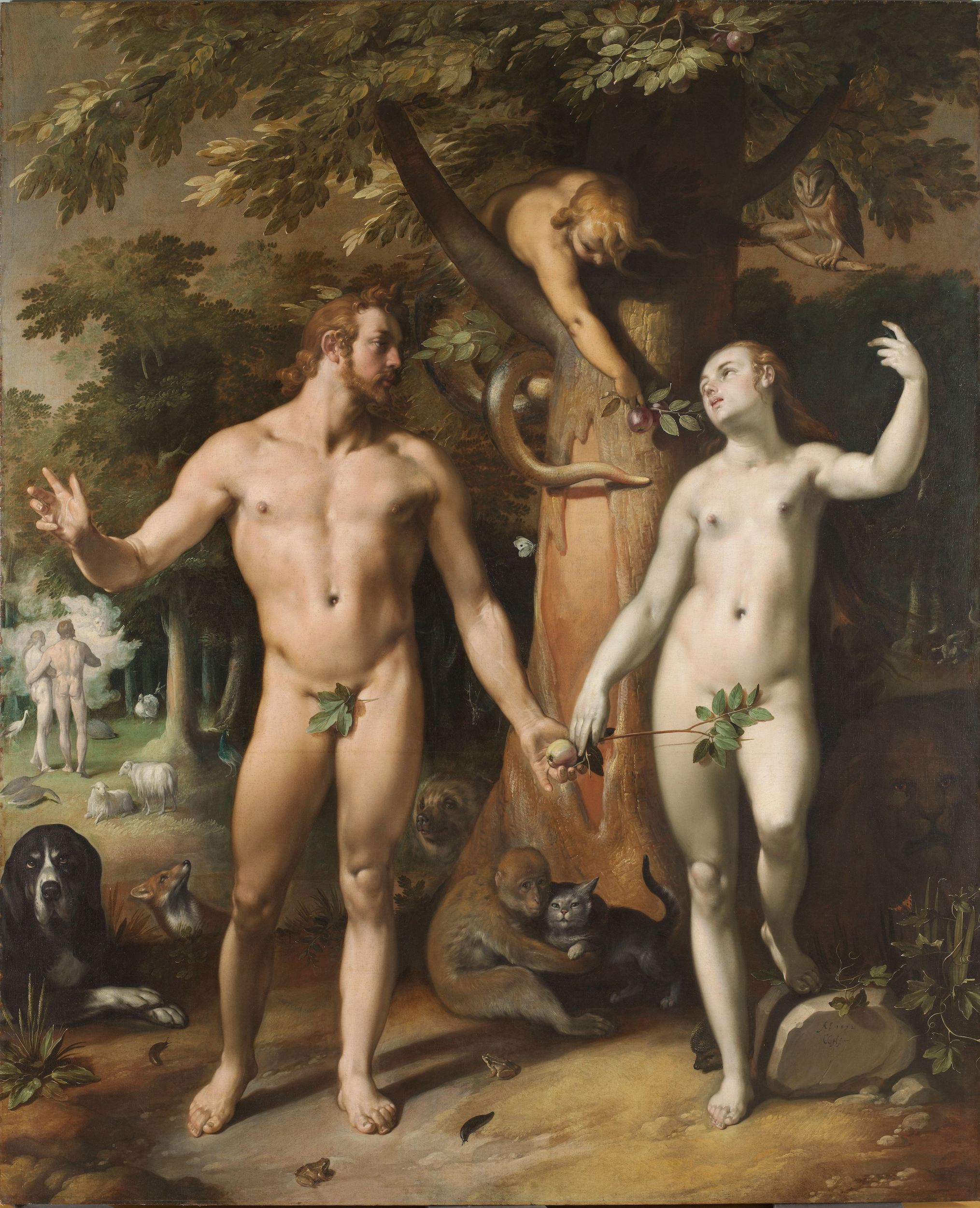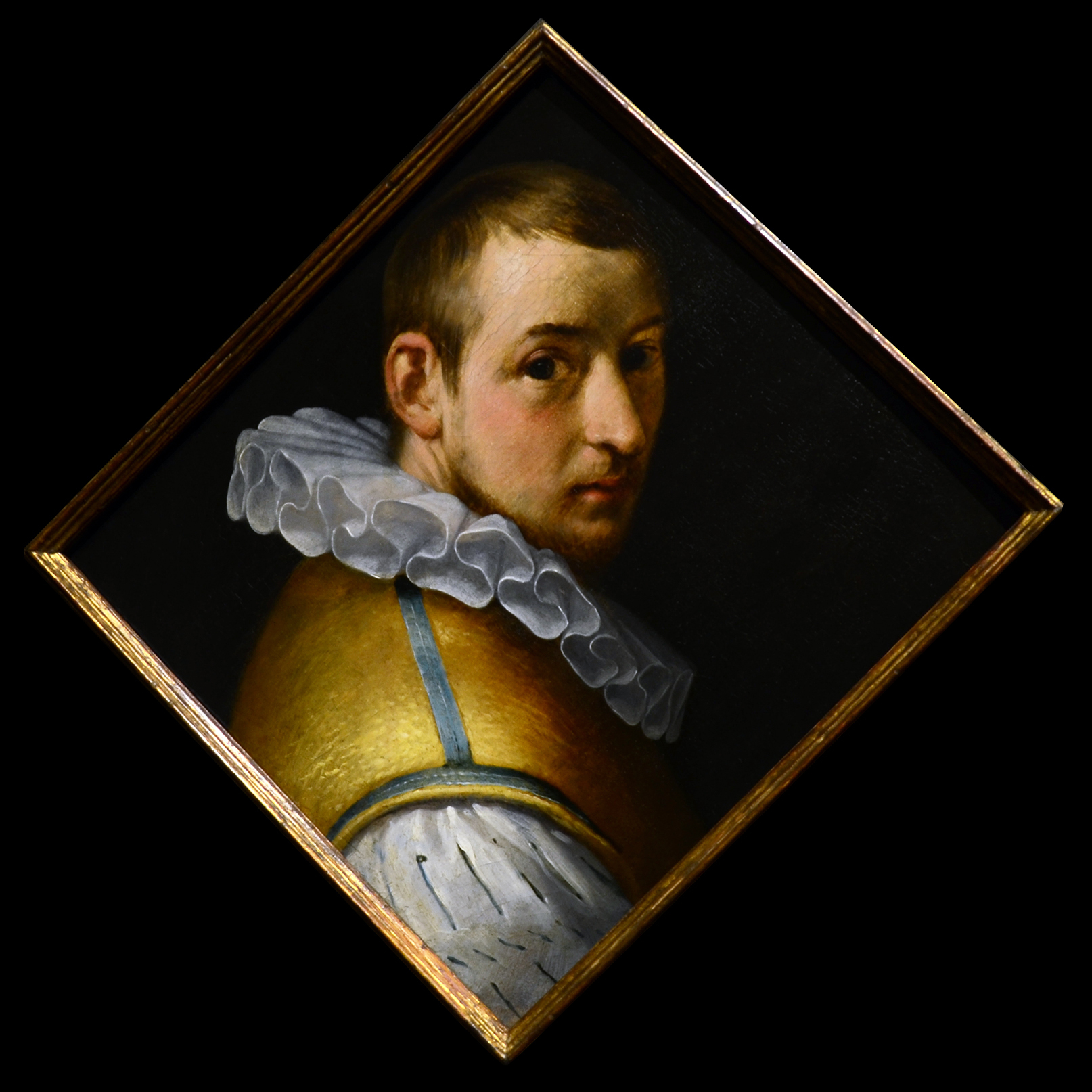The fall of man, the fall of Adam, or simply the Fall, is a term used in Christianity to describe the transition of the first man and woman from a state of innocent obedience to God to a state of guilty disobedience. Everything is described in the Biblical Book of Genesis, chapters 1 through 3. At first, Adam and Eve lived with God in the Garden of Eden, but the serpent tempted them into eating the fruit from the tree of knowledge of good and evil, which God had forbidden. After doing so, they became ashamed of their nakedness and God expelled them from the Garden to prevent them from eating from the tree of life and becoming immortal. And here is this scene!
In the left background we see God (a cloud with a human face and hands) cautioning Adam and Eve. They may eat the fruit of all of the trees, except the tree of "the knowledge of good and evil." Tempted by the serpent (with a human torso), Adam and Eve nevertheless eat the forbidden fruit, for which they were driven from Paradise. Note the amazing depictions of animals: the sad dog, curious fox, and scared monkey embracing the equally terrified cat.
We present today's painting thanks to the Rijksmuseum.
Dear DailyArt readers, we need your help to develop a new version of the DailyArt app. Please check out all the details.
P.S. Everyone knows the story of Adam and Eve, but what about Lilith? Discover what role this woman had in the Original Sin and how she was depicted in art.


 Cornelis Cornelisz. van Haarlem
Cornelis Cornelisz. van Haarlem